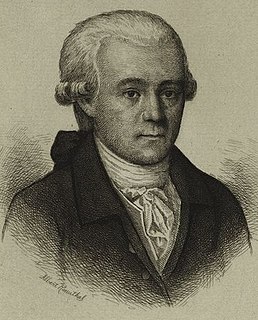 W
WWilliam Carmichael was an American statesman and diplomat from Maryland during and after the Revolutionary War. He participated in Benjamin Franklin's mission to Paris in 1776-8, represented Maryland in the Continental Congress in 1778 and 1779 and was the principal diplomat for the United States to Spain from 1782 to 1794.
 W
WCharles Carroll was an American statesman from Annapolis, Maryland. He was the builder of the Baltimore Colonial home Mount Clare (1760), and a delegate to the Second Continental Congress in 1776 and 1777.
 W
WCharles Carroll, known as Charles Carroll of Carrollton or Charles Carroll III, was an Irish-American politician, planter, slaveholder, and signatory of the Declaration of Independence. He was the last surviving person to sign the Declaration of Independence, dying 56 years after signing the document, in addition to being the only Catholic signatory.
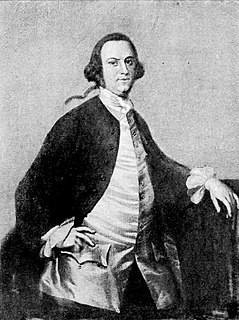 W
WDaniel Carroll was an American politician and plantation owner from Maryland, considered one of the Founding Fathers of the United States. He supported the American Revolution, served in the Confederation Congress, was a delegate to the Philadelphia Convention of 1787 which penned the Constitution of the United States, and was a U.S. Representative in the First Congress. Carroll was one of five men to sign both the Articles of Confederation and the Constitution. He was one of the very few Roman Catholics among the Founders.
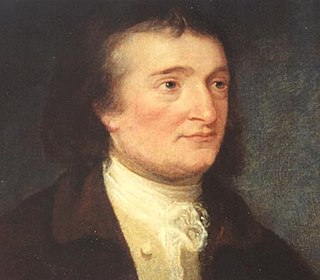 W
WJeremiah Townley Chase was an American lawyer, jurist, and land speculator from Annapolis, Maryland. He served as a delegate for Maryland in the Continental Congress of 1783 and 1784, and for many years was chief justice of the state’s court of appeals.
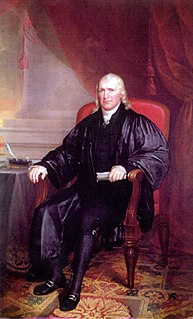 W
WSamuel Chase was an Associate Justice of the United States Supreme Court and a signatory to the United States Declaration of Independence as a representative of Maryland. He was impeached by the House of Representatives on grounds of letting his partisan leanings affect his court decisions but was acquitted by the Senate and remained in office.
 W
WBenjamin Contee was an American Episcopal priest and statesman from Maryland. He was an officer in the American Revolutionary War, a delegate to the Confederation Congress, and member of the first United States House of Representatives.
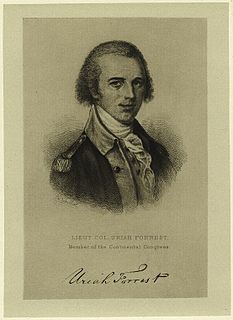 W
WUriah Forrest was an American statesman and military leader from Maryland. Forrest was born in St. Mary's County in the Province of Maryland, near Leonardtown. In his early childhood, he received only limited schooling. Born into a family with three other brothers, he was the direct descendant of a person who came to Jamestown, Virginia, in 1608.
 W
WJohn Hall was an American lawyer from Annapolis, Maryland. During the American Revolution he was a member of the council of safety, a delegate to the Maryland convention in 1775, and Maryland delegate to the Continental Congress in 1775.
 W
WJohn Hanson was a merchant and public official from Maryland during the era of the American Revolution. In 1779, Hanson was elected as a delegate to the Continental Congress after serving in a variety of roles for the Patriot cause in Maryland. He signed the Articles of Confederation in 1781 after Maryland joined the other states in ratifying them. In November 1781, he was elected as first President of the Confederation Congress, following ratification of the articles. For this reason, some of Hanson's biographers have argued that he was actually the first holder of the office of President of the United States.
 W
WWilliam Hemsley was an American planter and political leader from Maryland. He represented Maryland in the Continental Congress in 1782 and 1783.
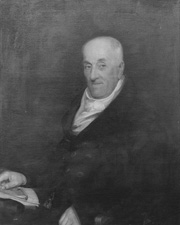 W
WWilliam Hindman was an American lawyer and statesman from Talbot County, Maryland. He represented Maryland in the Continental Congress, and in the federal Congress as both a Representative from the second and seventh districts, and as a U.S. Senator.
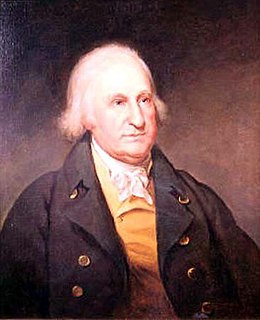 W
WJohn Eager Howard was an American soldier and politician from Maryland. He was elected as governor of the state in 1788, and served three one-year terms. He also was elected to the Continental Congress, the Congress of the United States and the U.S. Senate. In the 1816 presidential election, Howard received 22 electoral votes for vice president on the Federalist Party ticket with Rufus King. The ticket lost in a landslide.
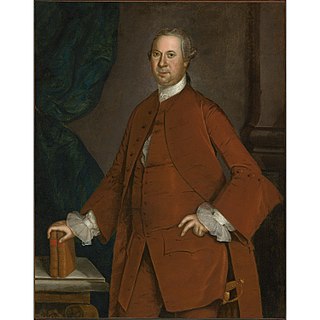 W
WDaniel of St. Thomas Jenifer was a politician, a Founding Father of the United States, and a signer of the United States Constitution. He was a leader for many years in Maryland's colonial government, but when conflict arose with Great Britain Jenifer embraced the Patriot cause.
 W
WThomas Johnson was an 18th-century American judge and politician who participated in several ventures to support the Revolutionary War. Johnson was the first (non-Colonial) governor of Maryland, a delegate to the Continental Congress, and an associate justice of the Supreme Court. He was the first person appointed to the court after its original organization and staffing with six justices. Johnson's tenure on the Supreme Court lasted only 163 days, which makes him the shortest-serving justice in U.S. history.
 W
WThomas Sim Lee was an American planter and statesman of Frederick County, Maryland. Although not a signatory to the Declaration of Independence, the Articles of Confederation or the US Constitution, he was an important participant in the process of their creation. Thomas Sim Lee was the second State Governor of Maryland, serving twice, from 1779 to 1783 and again from 1792 to 1794. Thomas Sim Lee also served as a delegate of Maryland in the Congress of the Confederation in 1783 and was a member of the House of Delegates in 1787. He worked closely with many of the Founding fathers and himself played an important part in the birth of his state and the nation.
 W
WEdward Lloyd IV was an American planter from Talbot County, Maryland. He was a delegate to the Continental Congress for Maryland in 1783 and 1784. From 1771 to 1774, he was a member of the General Assembly and in the Maryland State House of Representatives in 1780. In 1771 Lloyd purchased the Chase–Lloyd House in Annapolis, Maryland from Samuel Chase, and in 1790 he built Wye House on the family plantation near Easton, Maryland. The property is now on the National Historic Landmarks. He was a delegate to the Maryland State Convention of 1788, to vote whether Maryland should ratify the proposed Constitution of the United States.
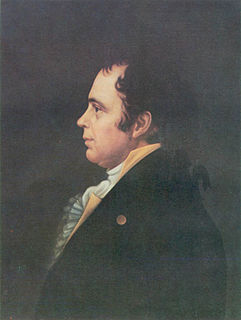 W
WJames McHenry was a Scotch-Irish American military surgeon and statesman. McHenry was a signer of the United States Constitution from Maryland, initiated the recommendation for Congress to form the Navy, and was the eponym of Fort McHenry. He represented Maryland in the Continental Congress. He was a delegate to the Maryland State Convention of 1788, to vote whether Maryland should ratify the proposed Constitution of the United States. He served as United States Secretary of War from 1796 to 1800, bridging the administrations of George Washington and John Adams.
 W
WWilliam Paca was a signatory to the United States Declaration of Independence from Maryland, a delegate to the First Continental Congress and the Second Continental Congress from Maryland, Governor of Maryland and a United States District Judge of the United States District Court for the District of Maryland.
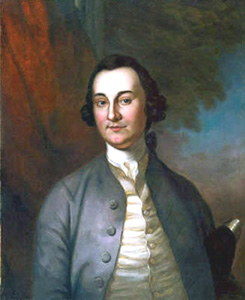 W
WGeorge Plater III was an American planter, lawyer, and statesman from Saint Mary's County, Maryland. He represented Maryland in the Continental Congress from 1778 to 1780, and briefly served as the sixth Governor of Maryland in 1791 and 1792.
 W
WRichard Potts was an American politician and jurist.
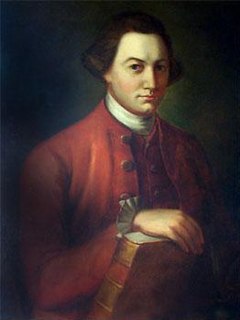 W
WNathaniel Ramsey was an American lawyer and soldier from Cecil County, Maryland. Ramsey fought in the Revolutionary War, and was a member of the Congress of the Confederation.
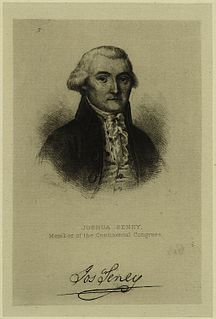 W
WJoshua Seney was an American farmer and lawyer from Queen Anne's County, Maryland. He represented the state of Maryland in the Continental Congress, and the second district of Maryland in the House of Representatives.
 W
WWilliam Smith was an American politician and representative of the fourth congressional district of Maryland in the United States House of Representatives.
 W
WThomas Stone was an American planter, politician, and lawyer who signed the United States Declaration of Independence as a delegate for Maryland. He later worked on the committee that formed the Articles of Confederation in 1777. He acted as president of Congress for a short time in 1784. Stone was a member of the Maryland Senate from 1777 to 1780 and again from 1781 to 1787.
 W
WMatthew Tilghman was an American planter and Revolutionary leader from Maryland, who served as a delegate to the Continental Congress from 1774 to 1776.